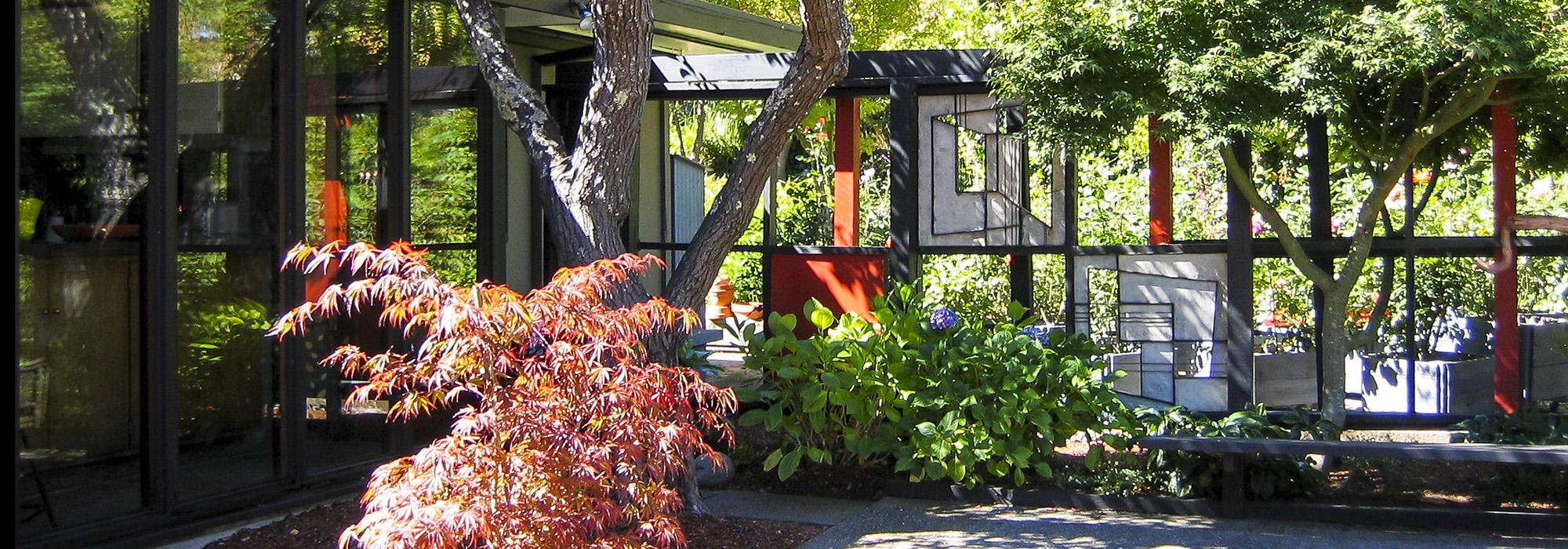Influential California Modernist Landscape Architect Robert Royston Subject of New Video Oral History
Media Contact: Nord Wennerstrom | T: 202.483.0553 | M: 202.255.7076 | E: nord@tclf.org
Royston is the 16th in The Cultural Landscape Foundation’s ongoing, award-winning Pioneers of American Landscape Design® video oral history series that documents, collects, and preserves first-hand information from landscape architects/educators
Washington, D.C. (January 28, 2020) – The Cultural Landscape Foundation (TCLF) today announces the release of a new Pioneers Oral History featuring the influential California Modernist landscape architect Robert Royston (1918-2008). This is the 16th installment in the award-winning Pioneers of American Landscape Design Oral History Project,which TCLF launched in 2003 to document, collect, and preserve first-hand information from pioneering landscape architects and educators. The 43:27-minute long Royston oral history is parsed into 19 one- to six-minute clips and organized under the themes of “biography,” “design,” and “projects.” The oral history includes a transcript and recollections by colleagues. Over the course of a career lasting more than 60 years, Royston was widely influential as both a landscape architect and an academic.
About Robert Royston
Royston, who was born in San Francisco, grew up on his family’s eighteen-acre walnut farm near Morgan Hill in the Santa Clara Valley. He began his six-decade-long career in landscape architecture after graduating from the University of California, Berkeley’s, landscape design program. While working his way through college, Royston was employed part-time in the office of Thomas Church and upon graduation in 1940 became a full-time employee. At the time, Church was expanding his practice, which had been centered primarily on residential gardens, to include the design of larger-scale, planned residential communities. Young Royston was given major responsibilities on housing projects in San Francisco, including Valencia Gardens, Potrero Hill, and the vast Parkmerced neighborhood.
After working for the office of Thomas Church in the 1940s, Royston served in the Navy during World War II and returned to partner with landscape architects Garrett Eckbo and Edward Williams to form Eckbo, Royston & Williams. Beginning with residencea and gardens, Royston's practice soon expanded to Modernist prkss and playgrounds. In 1947 Royston accepted a teaching position at the University of California, Berkeley, while continuing his professional practice. His students included both architects and landscape architects. His teaching career at Berkeley ended in 1951 when he resigned after refusing to sign a loyalty oath. Soon after leaving Berkeley, he accepted a part-time position at Stanford University and later taught at North Carolina State University. Over the course of his career, he has taught and lectured at more than 25 colleges and universities in the United States.
Royston’s innovative park work began during the 1950s. His first major commission was the Standard Oil Rod and Gun Club (1950), which was located at the Standard Oil refinery near Point Richmond, California, and served as a recreation facility for workers at the refinery. Royston’s carefully zoned design provided a gymnasium, swimming pools, imaginatively designed custom play equipment, family picnic areas, and several multi-use areas in a series of skillfully layered spaces on the site of a former skeet range and fishing pier. The biomorphic forms he employed were reminiscent of his residential design work. The facility was an immediate success and attracted the attention of Bay Area planners representing several municipalities. Royston soon was given important park and playground commissions, many of which gained attention in the national media. Among his more important works were Krusi Park in Alameda, Pixie Place in Marin County, Bowden and Mitchell Parks in Palo Alto (1956), and, later, Santa Clara’s Central Park (1960). Royston rejected the notion of parks as primarily outdoor gymnasiums, seeing them instead as “public gardens” serving a wide range of users, including families, very young children, and the elderly. Many of his parks contain residential-scale elements such as pergolas and enclosed, patio-like areas that create a sense of familiarity and intimacy. Royston also designed urban plazas, such as San Francisco’s Portsmouth Square and St. Mary’s Square (1952), an early park over parking structure.
Royston started a new firm in 1958 with partners Asa Hanamoto and David Mayes, which ultimately became Royston, Hanamoto, Alley & Abey, now headquartered in Mill Valley, California. The firm, working in a period of considerable growth, completed a multitude of projects ranging from residential gardens to the design of communities, including the 5,500-acre Sunriver community in Oregon (1969). Royston was named a Fellow of the American Society of Landscape Architects (ASLA) in 1973 and was awarded the ASLA Medal, the society’s highest award, in 1989. His distinguished career, extensive mentorship, and stylistic sensibilities have left an indelible mark on the field. Although officially retired, Royston remained active as a consultant to his firm and to clients engaged in the preservation and rehabilitation of his parks. He passed away at his home on September 19, 2008.
The American Society of Landscape Architects is the Annual Sponsor.
About The Cultural Landscape Foundation
The Cultural Landscape Foundation (TCLF) is a 5019(c)(3) non-profit founded in 1998 to connect people to places. TCLF educates and engages the public to make our shared landscape heritage more visible, identify its value, and empower its stewards. Through its website, publishing, lectures, and other events, TCLF broadens support and understanding for cultural landscapes. TCLF is also home to the Cornelia Hahn Oberlander International Landscape Architecture Prize.



